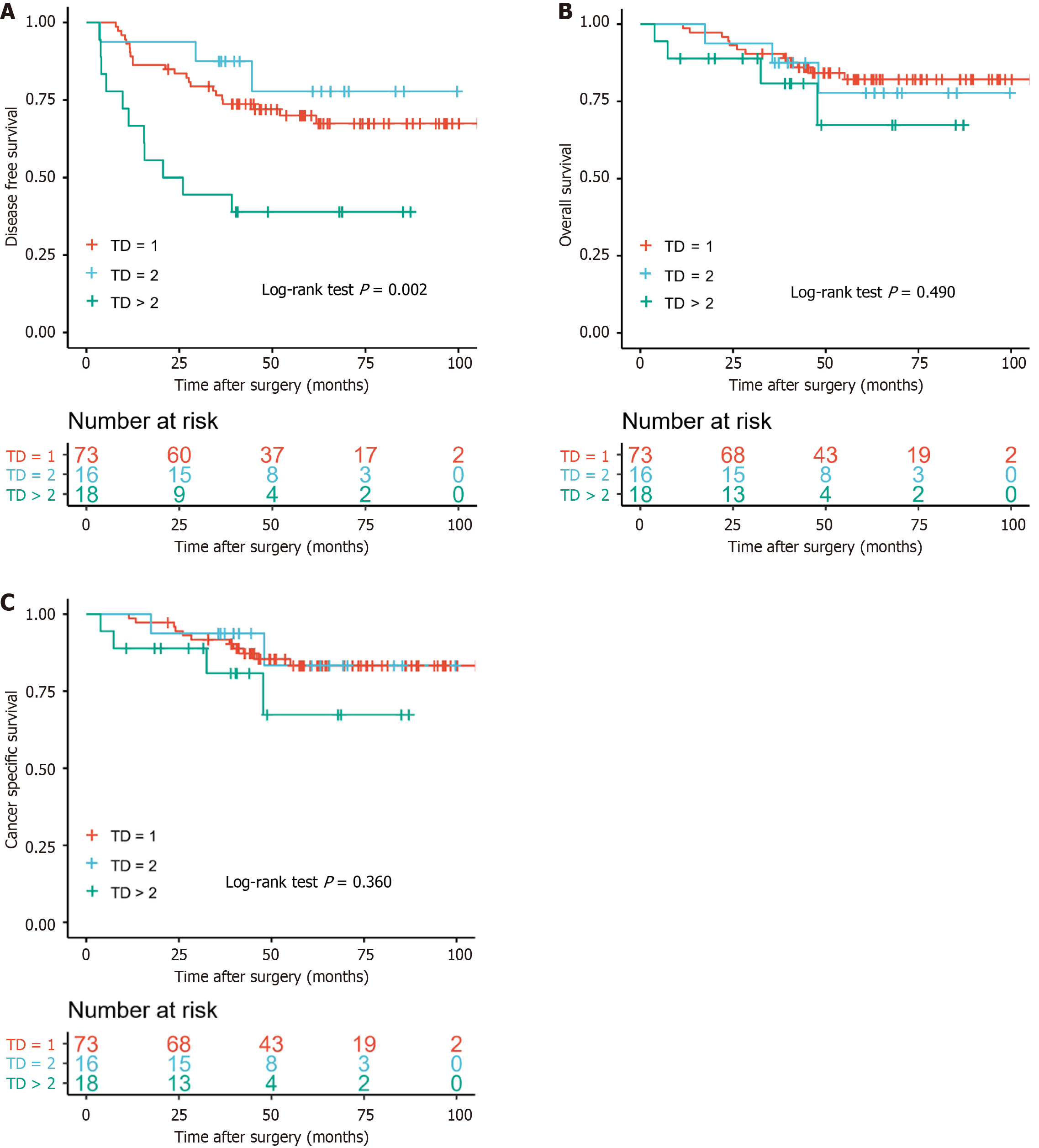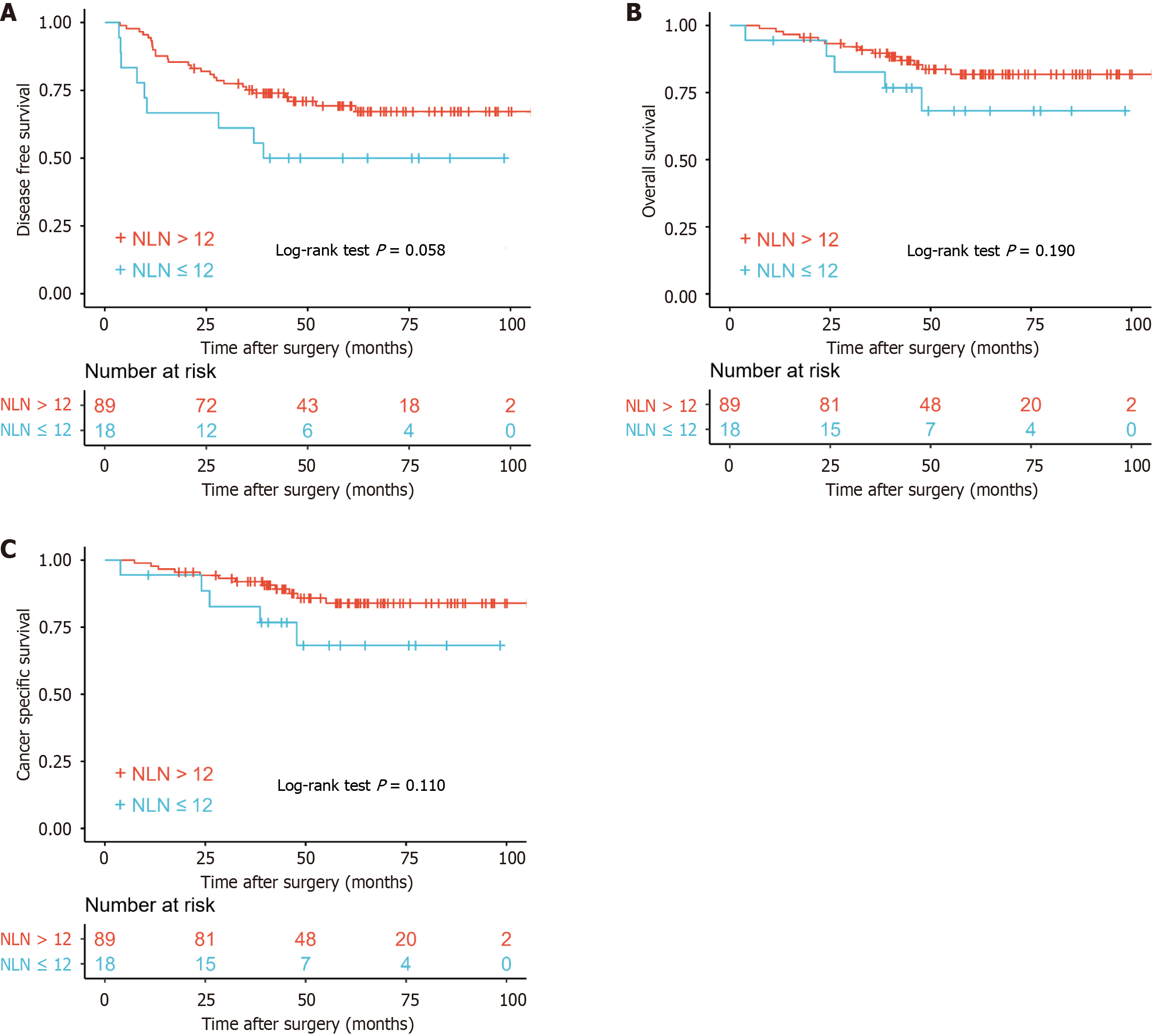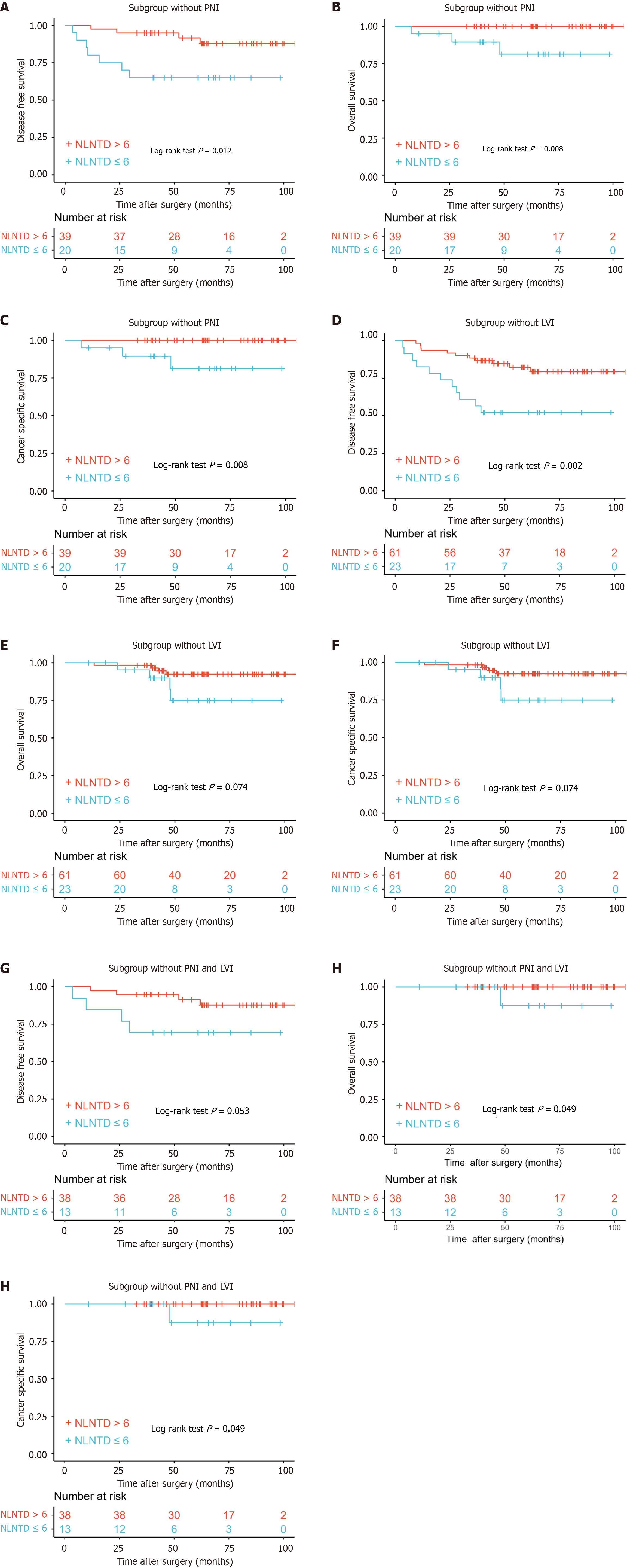Copyright
©The Author(s) 2025.
World J Gastroenterol. Aug 21, 2025; 31(31): 109857
Published online Aug 21, 2025. doi: 10.3748/wjg.v31.i31.109857
Published online Aug 21, 2025. doi: 10.3748/wjg.v31.i31.109857
Figure 1 Three groups divided according to the number of tumor deposits had different prognosis (tumor deposits = 1, tumor deposits = 2 and tumor deposits > 2).
A: Tumor deposits (TDs) predicting disease-free survival (P = 0.002); B: TD predicting overall survival (P = 0.490); C: TD predicting cancer-specific survival (P = 0.360). TD: Tumor deposits.
Figure 2 Prognosis in groups divided according to > 12 or < 12 negative lymph nodes.
A: Negative lymph node (NLN) status predicting disease-free survival (P = 0.058); B: NLN status predicting overall survival (P = 0.190); C: NLN status predicting cancer-specific survival (P = 0.110). NLN: Negative lymph node.
Figure 3 Prognosis in groups divided according to the cutoff value of combination of tumor deposits and negative lymph node.
A: Combination of tumor deposits and negative lymph node (NLNTD) predicting disease-free survival (P = 0.005); B: NLNTD predicting overall survival (P = 0.052); C: NLNTD predicting cancer-specific survival (P = 0.019). NLNTD: Combination of tumor deposits and negative lymph node.
Figure 4 Prognosis in groups divided according to the cutoff value of combination of tumor deposits and negative lymph node in subgroups without perineural invasion or lymphovascular invasion.
A: Combination of tumor deposits and negative lymph node (NLNTD) predicting disease-free survival (DFS) in subgroup without perineural invasion (PNI) (P = 0.012); B: NLNTD predicting overall survival (OS) in subgroup without PNI (P = 0.008); C: NLNTD predicting cancer-specific survival (CSS) in subgroup without PNI (P = 0.008); D: NLNTD predicting DFS in subgroup without lymphovascular invasion (LVI) (P = 0.002); E: NLNTD predicting OS in subgroup without LVI (P = 0.074); F: NLNTD predicting CSS in subgroup without LVI (P = 0.074); G: NLNTD predicting DFS in subgroup without LVI and PNI (P = 0.053); H: NLNTD predicting OS in subgroup without LVI and PNI (P = 0.049); I: NLNTD predicting CSS in subgroup without LVI and PNI (P = 0.049). NLNTD: Combination of tumor deposits and negative lymph node; PNI: Perineural invasion; LVI: Lymphovascular invasion.
- Citation: Sun ZG, Chen SX, Sun BL, Zhang DK, Zhong DR, Zhang TY, Hu YW, Han ZH, Wu WX, Hou ZY, Yao L, Zhang YJ, Sun HL, Jie JZ. Important role of tumor deposits and negative lymph nodes in prognosis of N1c colorectal cancer patients. World J Gastroenterol 2025; 31(31): 109857
- URL: https://www.wjgnet.com/1007-9327/full/v31/i31/109857.htm
- DOI: https://dx.doi.org/10.3748/wjg.v31.i31.109857
















